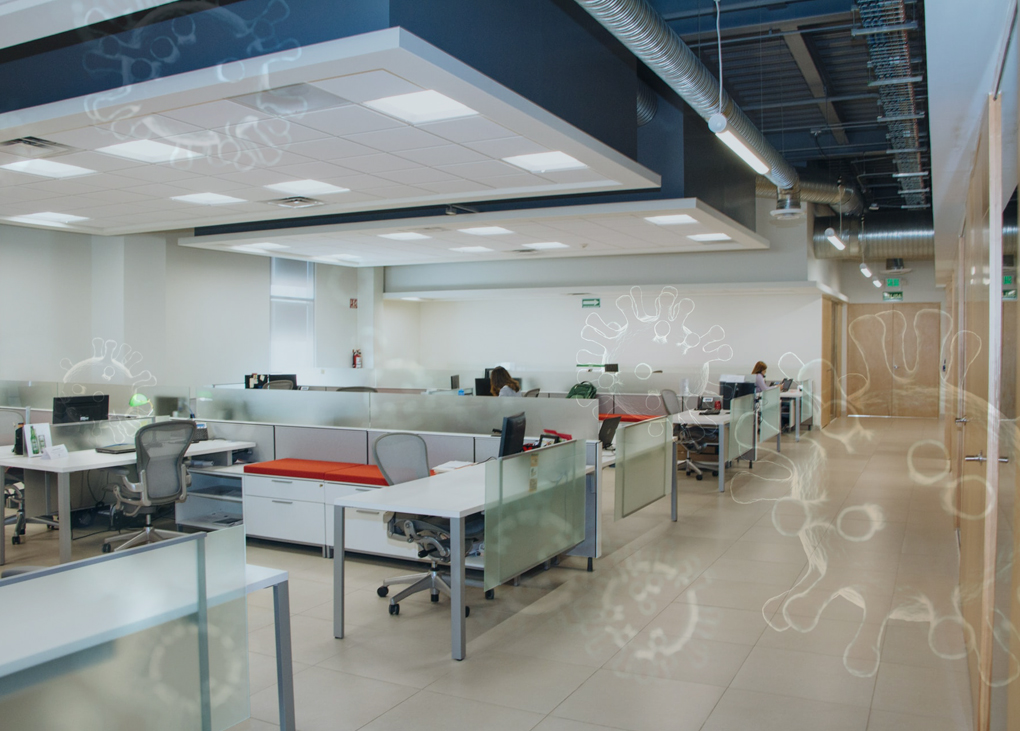Over the past few weeks, as the world registers more outbreaks of COVID-19, the attention on aerosol transmission of the virus has intensified.
Researchers at the University of Florida have now made an important breakthrough. The team isolated viable virus from aerosols collected in a hospital room dedicated to two patients with COVID-19. The air samples were collected up to 4.8m away from the patients – much further than the 1m of distancing currently recommended by the World Health Organization (WHO). Furthermore, neither of the patients were undergoing procedures or support treatments that are known to generate aerosols.
The WHO has previously acknowledged the possibility of the virus travelling through the air in very small particles (smaller than 5 microns), but has been cautious about quantifying the risk without solid evidence.
“Detecting viable virus in the air, away from the patients, is an ultimate proof that airborne transmission is an actual risk,” says Professor Lidia Morawska from Queensland University of Technology, who was among more than 200 scientists who wrote an open letter in July, urging the WHO to take the role of airborne spread of COVID-19 more seriously.
Indeed, the most recent advice from the WHO – a series of Q&A resources on COVID-19 and ventilation and air conditioning – implicitly acknowledges aerosol pathways.
For HVAC systems, the WHO recommends increasing the rate of air change, reducing recirculation and increasing outdoor air intake. For public spaces and buildings (such as offices and schools), it provides more detailed advice, including using economy modes to increase the percentage of outside air, disabling demand-control ventilation controls, improving filtration, running systems at maximum outdoor airflow two hours before and after spaces are occupied, and making sure that air flows from clean to less-clean areas (for example, reception areas).
Morawska says the WHO advice is “just the beginning”, and the organisation should develop proper and comprehensive recommendations.
“The medical community and the relevant national and international bodies should openly recognise the risk of airborne spread of COVID-19,” says Morawska. “They should provide guidelines for preventive measures to mitigate this route of transmission.
“We need guidelines on building design, building engineering controls and building operation to minimise the potential for indoor infection transmission.
“It is important to remember that the control measures, as above, are not only of importance for pandemics. Every year, epidemics of numerous respiratory infections strike, sicken millions, kill thousands, and cause economic loses of billions of dollars. Resilience should apply to all types of airborne infections (e.g., seasonal flu), and the measures should be adaptable, in a flexible manner, to the specific risks and demands and in particular energy conservation.”
Global investigations, local implications
Also noteworthy in the context of airborne transmission is the WHO’s advice on ventilation. It says that “air blowing from an infected person directly at another in closed spaces may increase the transmission of the virus from one person to another”.
In Australia, window units and split-system air conditioners are common. Owners and occupiers may believe that these supply fresh air, when they are simply recirculating indoor air.
In terms of building regulations, Section F of Australia’s National Construction Code sets requirements for natural ventilation of class 2 to 9 buildings, but some have argued that the bar is set too low. Under the rules, shops and restaurants of around 100m2 with two doors at the front and one at the back may have no fresh air, except when customers go in and out.
“Ventilation assumes fresh, comfortable and healthy air,” says Dr Vyt Garnys, M.AIRAH, Managing Director and Principal Consultant at CETEC Professional Scientific Solutions. “There are a lot of restaurants that close the back door to prevent combined odours from the trash cans, back alley smells, carpark and the greasy outlets from their cooking and kitchen noise putting off patrons from their food. Others close the front doors to prevent traffic noise, fumes and dust. However, provided COVID-19 is not expected to enter or linger, both of the above will help reduce the risk of transmission.”
Garnys says that although the responsibility for fresh air rests with the owner or occupier, they may be unaware of the risk.
“The responsible person may not know any better,” he says. “At least there is an option with a well-engineered, maintained and sensibly operated HVAC system, including doors and windows. This is why an independent expert risk assessment is essential.”
Building services and HVAC hygiene expert Scott Gregson, M.AIRAH, agrees there is a lack of awareness among building owners and occupiers about their HVAC&R systems, and how to create a safe working environment.
“There are a lot of ‘responsible persons’ who don’t know what they are responsible for or what assets they have,” says Gregson. “We are spending hours every day educating people about the difference between air conditioning, ventilation, refrigeration and exhaust systems.”
With regards to the functionality and operation of AC systems, Gregson says there are several deeper issues at play.
“The major failure,” he explains, “is, who is the ‘responsible person’? Do they know they are responsible, and what they are responsible for? Do they know if the facility fit for purpose, and if not, is this a maintenance issue or a capital works issue?
According to Gregson, this scenario often leads to a blame game between owner (capital works) and tenant (maintenance).
“More independent services need to be engaged,” he says, “to break the cycle and ensure compliance is met by all.”
 Mark Vender
Mark Vender


Leave a Reply